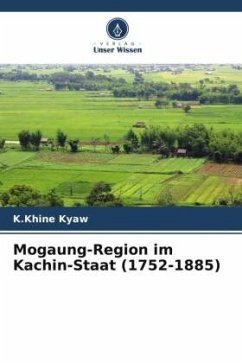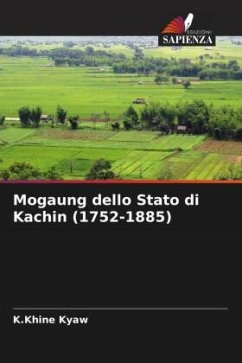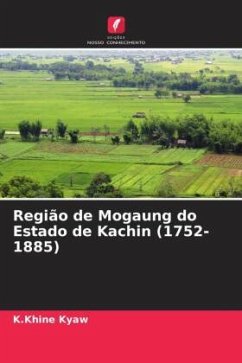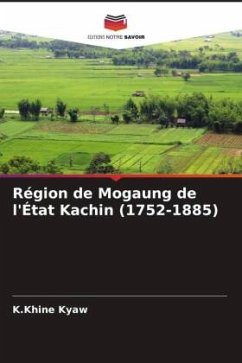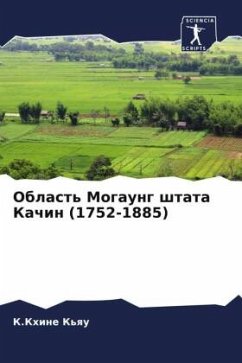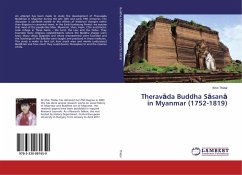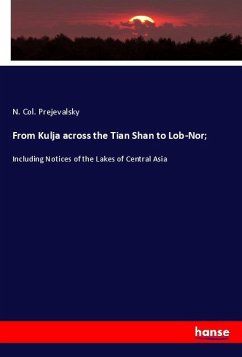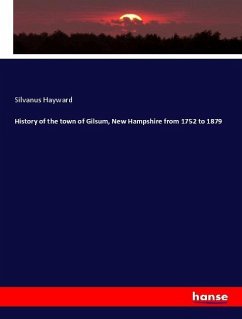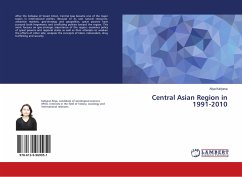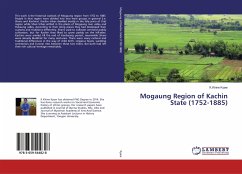
Mogaung Region of Kachin State (1752-1885)
Versandkostenfrei!
Versandfertig in 6-10 Tagen
33,99 €
inkl. MwSt.

PAYBACK Punkte
17 °P sammeln!
This work is the historical outlook of Mogaung region from 1752 to 1885. People in that region were divided into two main groups in general (i.e. Shans and Kachins). Kachin tribes dwelled mostly in the hilly parts of that region while Shan tribes settled in the plains of Mogaung river valley and Hukaung valley. According to their living places they had developed their customs and traditions differently. Shans used to cultivate wet-land paddy cultivation, but for Kachin they liked to grow paddy on the hill-sides. Kachins were animist till the end of Konbaung period; meanwhile Shans were already...
This work is the historical outlook of Mogaung region from 1752 to 1885. People in that region were divided into two main groups in general (i.e. Shans and Kachins). Kachin tribes dwelled mostly in the hilly parts of that region while Shan tribes settled in the plains of Mogaung river valley and Hukaung valley. According to their living places they had developed their customs and traditions differently. Shans used to cultivate wet-land paddy cultivation, but for Kachin they liked to grow paddy on the hill-sides. Kachins were animist till the end of Konbaung period; meanwhile Shans were already Buddhist for many centuries. There were many cultural and traditional differences in the way of child birth, religious feasts, wedding ceremonies and funeral rites between these two tribes. But both had left their rich cultural heritage remarkably.



